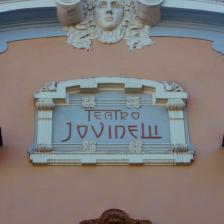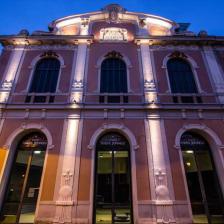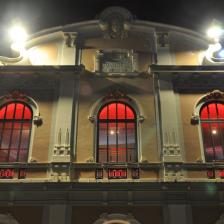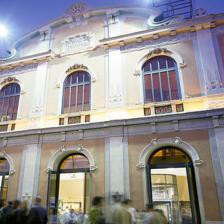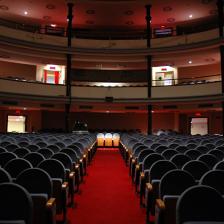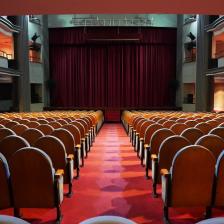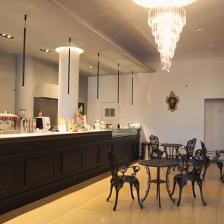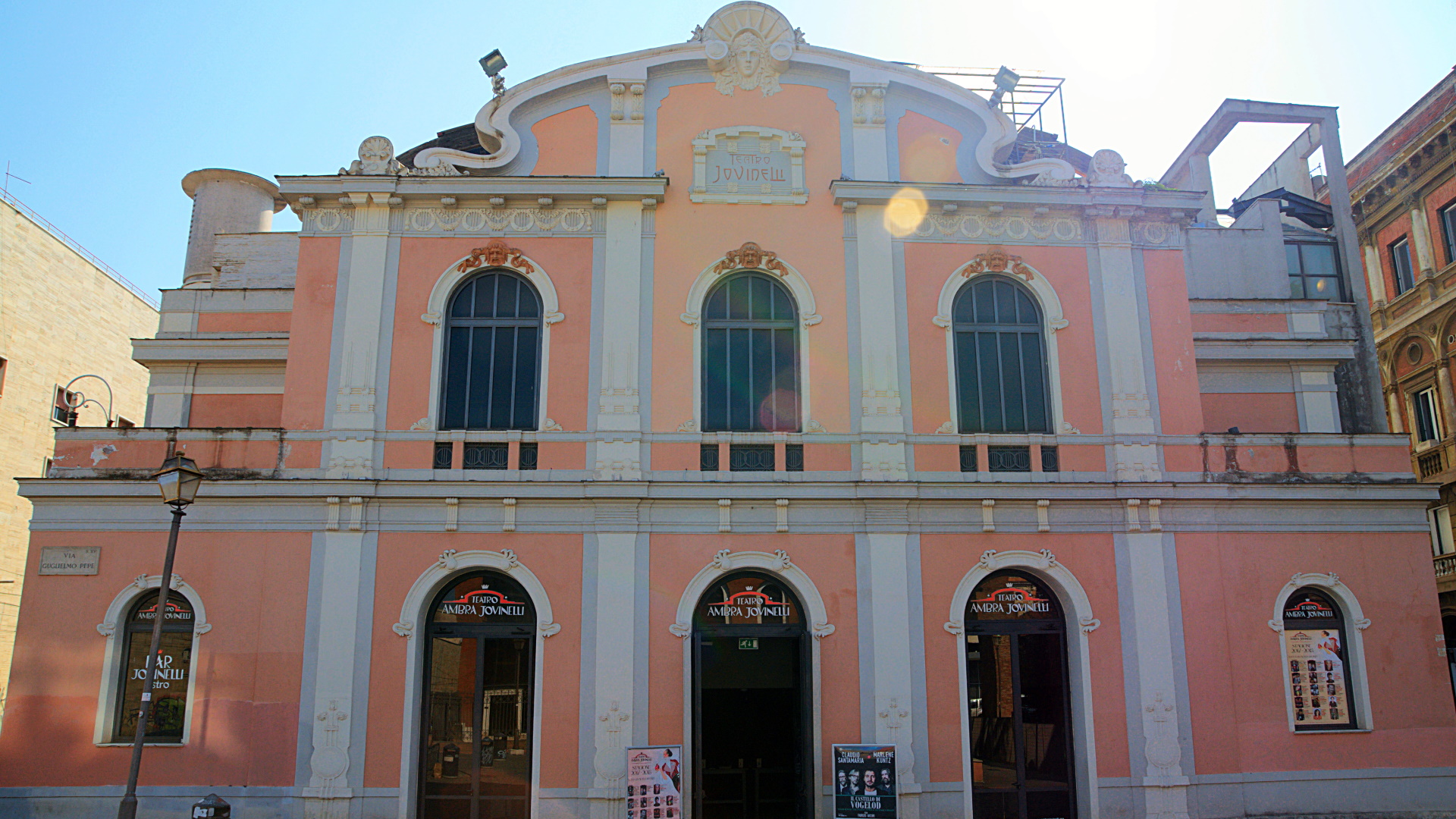

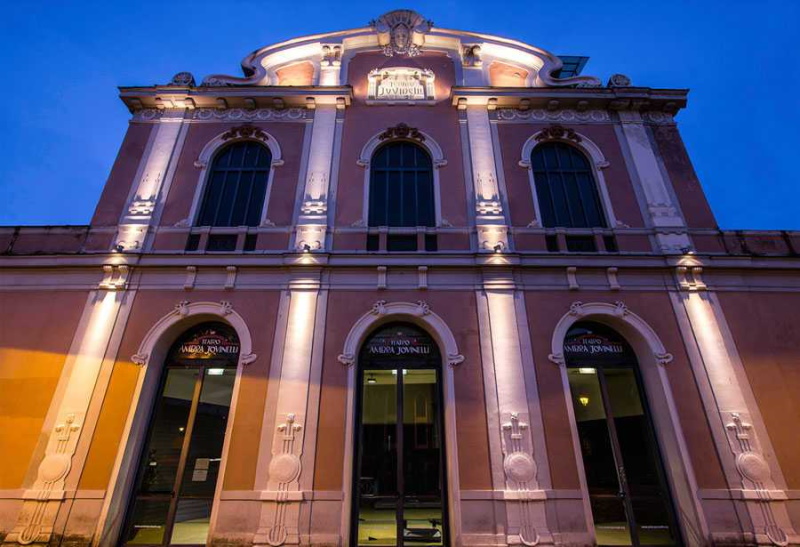
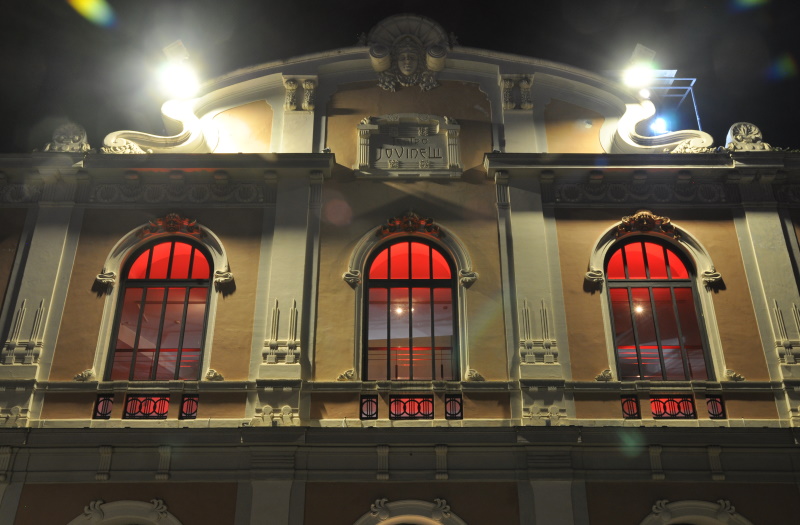
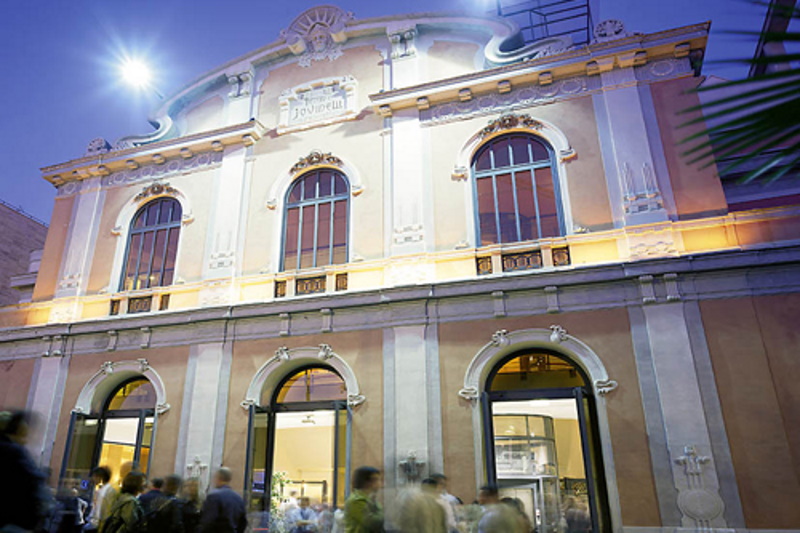
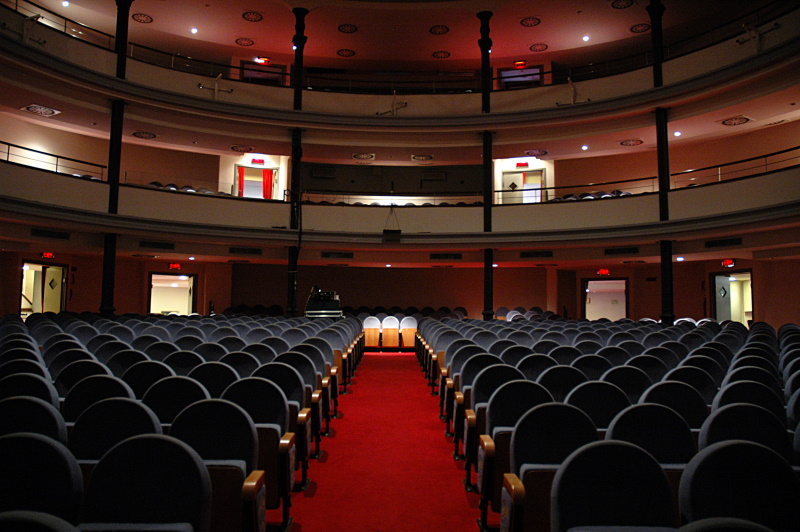
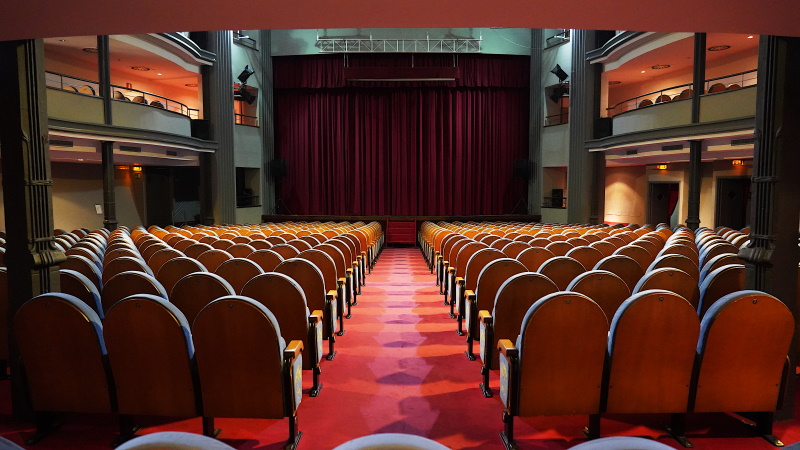
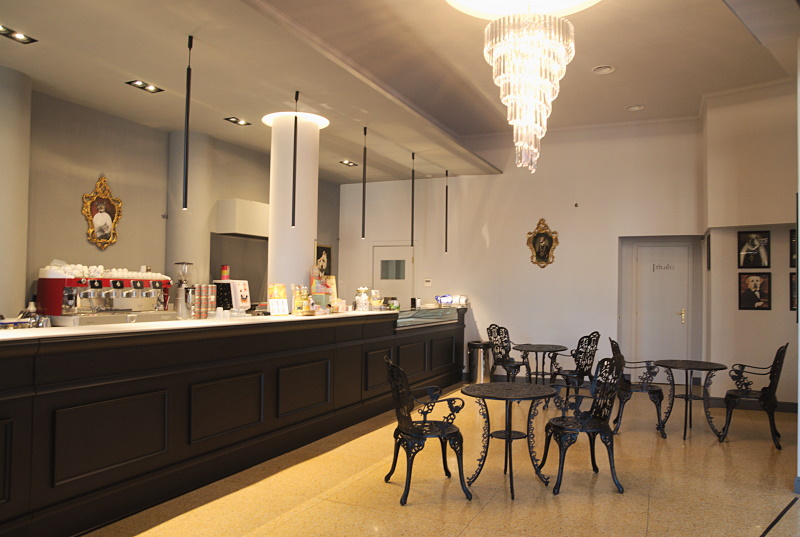
Located between Piazza Vittorio Emanuele II and Roma Termini Train Station in the Rione Esquilino, the Ambra Jovinelli is the only theatre in Rome built in Art Nouveau Style. It is devoted to comic theater performances.
The theatrical impresario Giuseppe Jovinelli wanted for Rome a luxurious variety theatre like those of prose that stood out for their lavish and elegant style.
The construction works began in 1906 on a project by the architects Pietro Chiodelli and Giacomo Radiconcini, replaced by Ulderico Bencivegna the following year. Original and innovative, crowned with a characteristic pediment with curved lines, the new theater opened on 3 March 1909.
At that time, the refined building, on two floors, had three doors with a round arch from which you could access the foyer and the hall placed on the same floor. The second floor, equal to the first, housed offices and dressing rooms. Stucco pilasters adorned with plaster flowers decorated the façade; the central ones ran up to the roof and ended with two sculptures in the shape of an eagle. In the center of the beautiful floral-style tympanum was a shell with a human face. Just below, a plaque mentioned the name of the theater. The audience, with 600 armchairs in red velvet, was dominated by a series of boxes. The room, in the form of a horseshoe, was designed to imitate the luxurious ones of the great theaters. Spectators could also sit in the stepped gallery that completed the theater's internal structure with cast iron columns, rich arches with floral ornaments, and large chandeliers. The total capacity of the Jovinelli was 1000 seats. Absolutely modern for the time, the theatre had ventilation and heating systems and electric lighting. The Jovinelli Theatre soon became one of Rome's most influential variety theatres. It was mainly known for its rich program with songwriters and duets, comedians and parodists, dancers, acrobats, and transformists. Among the comedians who performed on his stage in its early years, we can mention Raffaele Viviani, Ettore Petrolini, and Totò.
The fierce competition with cinema implied a change from a variety to an avant-garde theatre in the years after WWI. Fascism, then, which imposed substantial restrictions on dialectal theatre and political satire and the lack of state funds, quickly brought it into decline. It hosted many boxing matches and became an ante-litteram sports hall during the 1940s and 1950s. In the same years, performances and film screenings alternated, transforming the theater into a cinema-variety. To have greater visibility in newspapers, it took the name Ambra Jovinelli: the first letter would have placed it in the top places of the list of cinemas in the city. Usually, movie screenings, boxing meetings, singing competitions, cabarets, and showbiz alternated, but due to further competition from television, Ambra Jovinelli turned to cinema. On 29 April 1982, a fire devastated the entire structure, decreeing its definitive closure and abandonment. In 1990, the Jovinelli family sold the building. In July 1996, a group of young artists and intellectuals dedicated themselves to its recovery by organizing theatrical performances and exhibitions to rekindle public attention. Thanks to this initiative, the facade went under the constraint of the Ministry for Cultural Heritage and Activities in 1997. After a careful restoration, the Teatro Ambra Jovinelli reopened as a comedy theatre in January 2001, ending, however, again abandoned in June 2009.
On 26 December 2010, the first show organized under the new and current management debuted. In a few years, the historic theater returned to its former glory, becoming a landmark at the national level.
House of Architecture at the Roman Aquarium
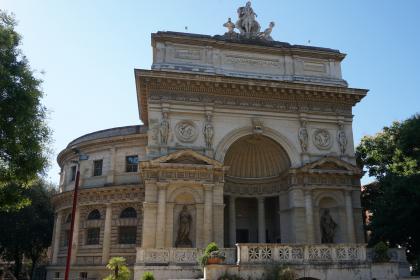
 Condividi
Condividi
The Church of Santa Bibiana
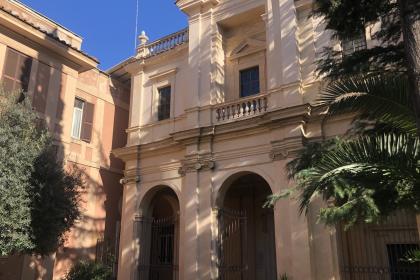
 Condividi
Condividi
Porta Maggiore and the tomb of Marcus Vergilius Eurysaces
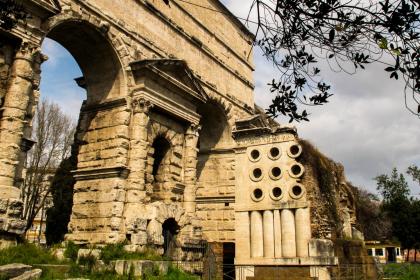
 Condividi
Condividi
Information
For opening times and visiting condition, please check the contacts.
 Condividi
Condividi
Location
To find out about all accessibility services, visit the Rome accessible section.












































